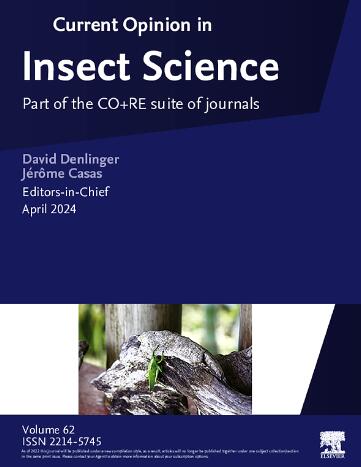New genetic tools to study Culex mosquito–virus interactions
IF 4.8
1区 农林科学
Q1 BIOLOGY
引用次数: 0
Abstract
Among the major genera of mosquito vectors, Culex species mosquitoes transmit viruses and parasites worldwide. Genetic tools provide the ability to understand virus–mosquito interactions and develop new biocontrol strategies. While significant progress has been made in developing genetic tools for Anopheles and Aedes mosquitoes over the past 25 years, similar progress in Culex species has been limited. Recent advances include a new chromosome-level Culex quinquefasciatus genome assembly, new in vitro gene-editing tools, successful in vivo transgenics, and proof-of-principle gene drive systems. This review provides a perspective on the past and current challenges associated with Culex transgenesis and genetic tool development, as well as a summary of recent advances.
研究库蚊与病毒相互作用的新基因工具。
在蚊虫媒介的主要属中,库蚊在世界范围内传播病毒和寄生虫。遗传工具提供了了解病毒-蚊子相互作用和开发新的生物防治策略的能力。虽然在过去25年中在开发按蚊和伊蚊遗传工具方面取得了重大进展,但在库蚊物种方面的类似进展有限。最近的进展包括新的染色体水平的致倦库蚊基因组组装,新的体外基因编辑工具,成功的体内转基因和原理验证的基因驱动系统。本文综述了库蚊转基因和遗传工具开发的过去和当前的挑战,并对最近的进展进行了总结。
本文章由计算机程序翻译,如有差异,请以英文原文为准。
求助全文
约1分钟内获得全文
求助全文
来源期刊

Current opinion in insect science
BIOLOGYECOLOGYENTOMOLOGY-ECOLOGY
CiteScore
10.40
自引率
1.90%
发文量
113
期刊介绍:
Current Opinion in Insect Science is a new systematic review journal that aims to provide specialists with a unique and educational platform to keep up–to–date with the expanding volume of information published in the field of Insect Science. As this is such a broad discipline, we have determined themed sections each of which is reviewed once a year.
The following 11 areas are covered by Current Opinion in Insect Science.
-Ecology
-Insect genomics
-Global Change Biology
-Molecular Physiology (Including Immunity)
-Pests and Resistance
-Parasites, Parasitoids and Biological Control
-Behavioural Ecology
-Development and Regulation
-Social Insects
-Neuroscience
-Vectors and Medical and Veterinary Entomology
There is also a section that changes every year to reflect hot topics in the field.
Section Editors, who are major authorities in their area, are appointed by the Editors of the journal. They divide their section into a number of topics, ensuring that the field is comprehensively covered and that all issues of current importance are emphasized. Section Editors commission articles from leading scientists on each topic that they have selected and the commissioned authors write short review articles in which they present recent developments in their subject, emphasizing the aspects that, in their opinion, are most important. In addition, they provide short annotations to the papers that they consider to be most interesting from all those published in their topic over the previous year.
 求助内容:
求助内容: 应助结果提醒方式:
应助结果提醒方式:


